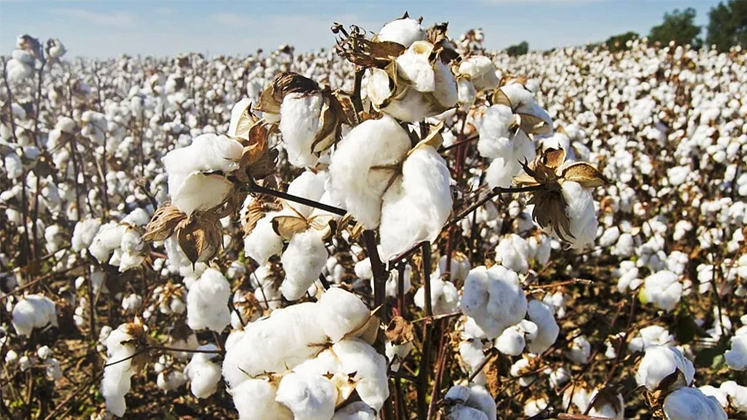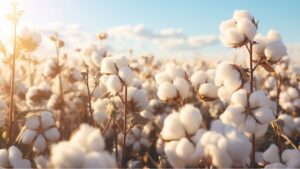
Bangladesh’s apparel exports made a remarkable turnaround in 2021. Despite all the challenges, the country exported apparel worth US $ 35.81 billion, of which cotton-based apparels contributed around 75 per cent, translating to around US $ 26.86 billion of the total earnings from apparel export.
As per reports, the country imported around 8.5 million bales of cotton in the 2021 calendar year, setting the stage now for more than 9 million bales to be imported this year keeping with the fresh inflow of new work orders that are coming in thick and fast.
This raw cotton is used in local mills for spinning.
“The upward trend of garment export will continue up to June this year as we booked a large volume of work orders,” claimed Faruque Hassan, President of the Bangladesh Garment Manufacturers and Exporters Association (BGMEA).
According to the data analysed by Team Apparel Resources, in calendar year 2021, the raw cotton imported by Bangladesh was US $ 3 billion even as the total cotton’s raw material (raw cotton + yarns + fabrics) imports stood at US $ 6.56 billion, which means Bangladesh spent around US $ 6.56 billion to purchase cotton raw material to produce finished goods of cotton which accounts for roughly 60 per cent of the total garments manufactured while the rest 40 per cent is produced from locally sourced raw material and, together they account for finished products worth US $ 26.86 billion that are exported, which if at all, points to remarkable value addition by the Bangladesh garment makers.
However, with the price of cotton in the global market rising drastically on the back of global production shortfall and speculations, it is now emerging as a major challenge for the industry, which is finding it increasingly difficult to cash in on the opportunities as global buyers come back to their time-tested sourcing destination with renewed focus.
The fact that the apparel exporting behemoth China, which is also the largest cotton producer and consumer in the world, is forced to import more cotton following the erstwhile Trump administration’s ban on imports of all cotton products from China’s Xinjiang province over allegations of forced labour and human rights violations, is making cotton even more expensive in the global market.
The price of widely consumed 30-carded yarn had increased to US $ 4.71 per kg in December last year even as the millers fixed the price at US $ 4.20 per kg in September to stop a rise in prices following a request made by the garment exporters, underlined the President of Bangladesh Textile Mills Association or BTMA, Mohammad Ali Khokon, adding the price was only increased after cotton price shot past the US $ 1-mark in the international markets.
For information, in August 2021, the millers and garment exporters agreed that the price of 30 carded yarn will not cross US $ 4.20 per kg in the local market if the cotton price remains between US $ 0.85 per pound and US $ 1.0 per pound. However, the cotton price having crossed this limit, yarn price was hiked in the local markets as well.
Given the price volatility of cotton, which both textile and garment makers underline, has become a trend lately with little hope of price correction in near future, the only way to deal with the existing situation seems to be increasing the domestic production of cotton.
Considering the country’s insatiable appetite for cotton, experts believe self-sufficiency in cotton will be hard to come by even if they accept it would but surely help reduce dependence on overseas destinations, to a large extent.
Figures tell it all!
In 2020-21 fiscal, Bangladesh imported 7.6 million bales of cotton, spending around Taka 250 billion even as United Nations report, citing the import data, says that Bangladesh would become a major player in the global cotton market by 2030.
According to reports, in recent years, Bangladesh sourced its cotton imports from as many as 43 different countries of the world, with the majority coming from the countries and regions of West Africa (27 per cent), India (26 per cent), United States (13 per cent) and Brazil (13 per cent).
Meanwhile, the Agricultural Outlook 2021-2030–-published in July last by the Organization for Economic Cooperation and Development (OECD), and Food and Agriculture Organization (FAO) – presented detailed information about the cotton market and termed Bangladesh a potential big player in the global cotton trade, citing the growing production of readymade garments in the country.
Following the growing demand, production of cotton has been increasing in Bangladesh. However, local production of cotton shares very little of the total demand.
In last 10 years, cotton production increased two-fold in the country. The local cotton production rose to about 150,000 bales annually in last four years even if the amount of local production is less than 5 per cent of the total demand. Hence, Bangladesh has no option but meet its cotton requirements by increasing import volumes.
The OCED-FAO Outlook predicted like Vietnam, Bangladesh’s cotton import would grow to 18 per cent of global trade by 2030. Superseding China, the two other Asian countries would become big players in the cotton market, it said.
It’s the acute scarcity of arable land and absence of the right technology which have become the major stumbling blocks towards enhancing domestic production of cotton, experts say.
Light at the end of the tunnel?
However, if latest reports are something to go by, things are all but set to change! The development of a promising new cotton variety, namely CDB Tula 1, is ushering in hopes that the country will soon be able to cut its import dependency significantly thanks to this high-yield, drought-tolerant, and disease-resistant homegrown cotton variety, which has a shorter maturity as well.
It was all due to the collaboration between the Cotton Development Board (CDB) under the Agriculture Ministry, Bangladesh Institute of Nuclear Agriculture (BINA), International Atomic Energy Agency (IAEA) and Food and Agriculture Organization of the United Nations (FAO), that the new variety was developed applying nuclear technology, and is now being planted at 13 different locations across Bangladesh.
More than a thousand farmers are also receiving training on the planting procedure of CDB Tula 1.
After the current stage of field demonstrations across 13 different zones in the country, CDB Executive Director Md Akhteruzzaman hopes farmers in all cotton growing zones will get the seeds of this new variety of cotton.
“Cotton is the oldest known and most used textile around the world. While it took around 3,000 years to understand how to cultivate and process the first wild cotton, now, with nuclear techniques, new and improved varieties have been developed in Bangladesh in record time. Five years to be exact, claimed the IAEA even as Dr Kamrul Islam, Senior Scientific Officer of CDB and who is said to have played a pivotal role in the development of the variety as the Project Director, stated: “The varieties that Bangladeshi cotton farmers have long been growing takes 180 days to reach maturity for harvesting, while the CDB Tula 1 is a shorter maturity cotton and can be harvested in 140 to 150 days.”
Farmers will not require much supplementary irrigation, as the cotton would be watered by the monsoon rains, further explained the CBD’s Senior Scientific Officer, claiming the yield potential of the new variety will be 20-30 per cent higher, as more seeds can be cultivated on less land by keeping smaller gaps between rows.
“Mutation breeding is a new area of research for us and we now have this new cotton variant, which can be grown in a short period of time. We expect this fast pace growth will increase yields and farmers’ income by 40 per cent,” observed Dr Kamrul, who along with his team has collaborated with the IAEA and the FAO in developing new varieties of cotton since 2016.
It did not take long though to achieve the desired success, as they are now able to develop this new variety which is more productive and reportedly has better fibre quality too.
Mutation breeding through the application of nuclear techniques is cost effective and quicker than conventional breeding, as it helps create numerous new genetic variations for a wider selection.
With the development of this new variety of cotton and many more innovations in the pipeline, CDB scientists are very much hopeful, that sooner or later, Bangladesh will achieve a great degree of self-sufficiency in domestic cotton production.






